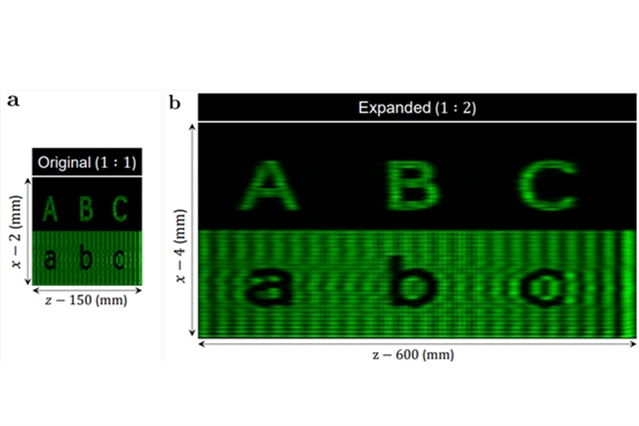
近日,美国哈佛大学Federico Capasso课题组与坎皮纳斯大学的Michel Zamboni-Rached等人合作,成功研制了用于连续深度全息照相和三维体积显示的光片。相关成果已于2023年4月10日在国际学术期刊《自然—光子学》上发表。
该研究提出了一种新型的全息术方法,它将所需的场景投射到垂直于显示屏平面的二维片上,从而实现了沿光学路径连续重建物体的效果。为了实现这一目标,研究人员将目标场景分解为光线束——非衍射的铅笔状光束数组,并按照需要在传播方向上进行局部结构化。通过使用空间光调制器,研究人员将二维场景投影到垂直于全息术的平面上,然后通过并行堆叠多个二维片,可以高保真地构造三维物体,同时避免了串扰问题。这种计算机生成的全息术方法为实现逼真的三维全息术开辟了新途径,可以应用于可穿戴智能眼镜、便携式设备和广角体积显示器等领域。
据介绍,生成高质量的三维场景是虚拟和增强现实、人机交互和交互式学习中追求的目标,计算机生成全息术可以实现这一目标。通常情况下,三维物体通过将一堆二维场景沿光学路径和垂直于其方向级联构造而成。然而,这种方法受到全息术数值孔径的基本限制,这限制了生成的三维图像的轴向分辨率和深度感知。
附:英文原文
Title: Light sheets for continuous-depth holography and three-dimensional volumetric displays
Author: Dorrah, Ahmed H., Bordoloi, Priyanuj, de Angelis, Vinicius S., de Sarro, Jhonas O., Ambrosio, Leonardo A., Zamboni-Rached, Michel, Capasso, Federico
Issue&Volume: 2023-04-10
Abstract: Projecting high-quality three-dimensional (3D) scenes via computer-generated holography is a sought-after goal for virtual and augmented reality, human–computer interaction and interactive learning. Three-dimensional objects are usually constructed from a single hologram by cascading a stack of two-dimensional (2D) scenes along the optical path and perpendicular to it. The spatial separation between those scenes, however, is fundamentally constrained by the numerical aperture of the hologram, limiting the axial resolution and depth perception of the generated 3D image. Here we propose a new class of hologram that instead projects a desired scene onto 2D sheets oriented perpendicular to the plane of the display screen, thus enabling continuous reconstruction of the object along the optical path. To achieve this, we decompose the target scene into threads of light—arrays of non-diffracting pencil-like beams whose envelopes can be locally structured along the propagation direction at will. Using a spatial light modulator, we project 2D scenes onto the plane normal to the hologram and by stacking multiple 2D sheets in parallel we construct 3D objects with high fidelity and low crosstalk. Computer-generated holography of this kind opens new routes to realistic 3D holography and can be deployed in wearable smart glasses, portable devices and wide-angle volumetric displays.
DOI: 10.1038/s41566-023-01188-y
Source: https://www.nature.com/articles/s41566-023-01188-y
